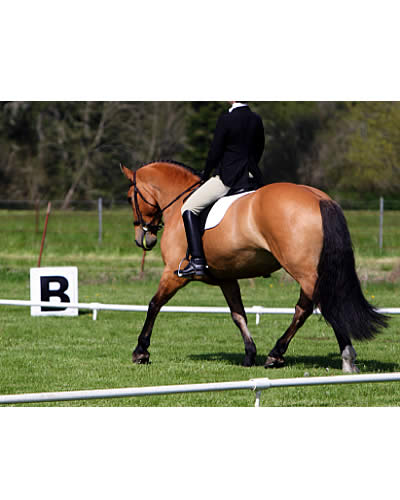When a horse is on the bit, here’s what he’ll look like:
- His entire outline from back to front looks round.
- His hind legs step actively underneath his body, his back is up and swinging, his neck is long and low enough to be in line with the “power train” of his hindquarters, his poll is the highest point, and his nose is about 5 degrees in front of the vertical.
- From the saddle his neck is widest at the base (just in front of the withers) and becomes progressively narrower as you get closer to his ears.
- From the side, his neck looks longish and relatively low rather than up in the air and short. He’s “pumped” up or “blooming” at the base of his neck. There’s no dip just in front of his withers.
When a horse is on the bit, here’s what he’ll feel like:
- He’s one unit rather than a jumble of “disconnected parts”.
- He’s more comfortable to sit on because his back is relaxed.
- In trot and canter, he feels like a beach ball bouncing along.
- His back (behind the saddle) is up and swinging rather than dropped and tense.
- His energy is self-perpetuating. The power comes from behind, over his back, through his neck, and gets recycled back to his hind legs. But if your horse, let’s say, is crooked and pops his shoulder out, the energy is going to go diagonally across his body. Then, you’ll have to use your driving aids again to recreate the energy.
- You feel like anything is possible within the next step. For example, he can immediately go from trot to canter. Or he can immediately go from working canter into a canter lengthening. Or he can promptly do a canter depart.
If you’re not sure if “anything is possible” within the next step, ask for one of those transitions. If it’s easy to do, then you know that your horse is on the bit.
Jane Savoie
1174 Hill St ext.
Berlin, VT 05602
Jane’s Website
DressageMentor.com
